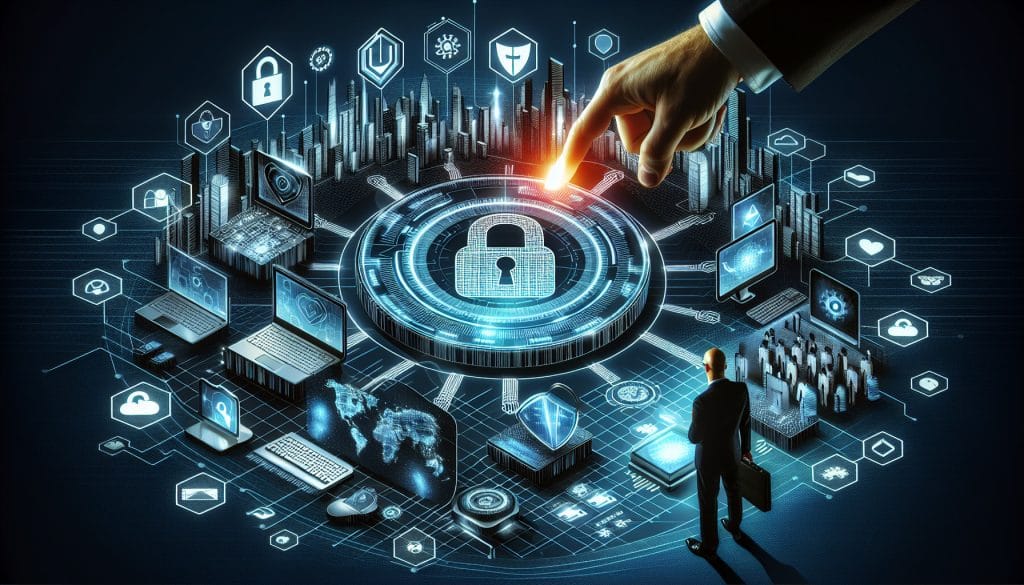Protection against cyber threats: Strategies for proactive corporate security in Germany
In today's digital landscape, companies in Germany are increasingly exposed to cyber threats. Given the increasing number of cyber attacks, it is crucial that companies implement proactive cybersecurity strategies to protect themselves effectively. In this article, we will examine from different perspectives what measures and technologies companies can take to protect themselves against cyber threats.
understanding cyber threats
Before we dive into strategies, it is important to develop a solid understanding of the types of cyber threats that endanger businesses in Germany. The most common threats include:
- Phishing attacks: These aim to obtain sensitive information from employees, often through fake emails.
- Malware: Malware that penetrates systems and steals or damages data.
- Ransomware: A form of malware that encrypts data and demands a ransom.
- DDoS attacks: Overloading servers with massive requests in order to impair the availability of services.
Understanding these threats is the first step to developing effective proactive cybersecurity strategies. According to a recent study by BSI Cyber attacks were responsible for over 70% of recorded security incidents in 2022.
Key components of proactive cybersecurity strategies
To successfully protect against cyber threats, companies should integrate several key components into their security strategies:
- Risk assessment: A thorough assessment of potential risks helps identify vulnerabilities and set priorities.
- Training of employees: Regular training increases employee awareness of security threats and practices.
- Technological defense measures: The use of advanced security solutions, such as firewalls and intrusion detection systems, is crucial.
- Incident Response Plans: Security incident response plans are important to respond to threats quickly and effectively.
The importance of risk assessment
A thorough risk assessment forms the basis for all proactive cybersecurity strategies. The following steps should be considered:
identification of assets
Companies should first identify what IT assets (hardware, software, data) they have and which of these are most valuable. This enables a targeted security strategy.
assessment of vulnerabilities
Technological and organizational vulnerabilities must be identified. For example, outdated systems or a lack of security policies can pose risks.
threat analysis
Knowledge of potential threats targeting the company is essential. Analysis of data from external sources, such as the Federal Office for Information Security (BSI), can provide valuable information here.
implementation of measures
Based on the assessment, specific measures can be taken to mitigate the identified risks.
Technological defense measures
As part of a comprehensive security policy, companies should reconsider which technologies are best suited to ward off cyber threats. Here are some key technologies:
firewalls and IDS
Firewalls are essential security components that regulate data traffic between the internal network and external sources. Intrusion Detection Systems (IDS) monitor network traffic for suspicious activities. Both are important for detecting and repelling attacks at an early stage.
endpoint protection
Every device connection to the corporate network must be protected. The use of antivirus and antimalware software is crucial to securing endpoints from threats. Selecting suitable products, such as Original Ricoh B027 1346, can help with device security.
data encryption
To protect sensitive data, comprehensive encryption should be implemented. This is especially true for data transmitted over the Internet to minimize the risk of data leakage.
employee training and awareness raising
One of the biggest weak points in corporate security is often the employees themselves. Regular training to raise awareness of cyber threats is therefore essential. The following aspects should be included in the training:
- Detecting phishing emails and fraud attempts.
- Secure handling of passwords and authentication methods.
- Behavior in the event of a cyber incident.
Practical exercises
Simulations of cyberattacks can help employees put what they have learned into practice. These experiences make training more realistic and promote understanding of the importance of security practices.
Developing an Incident Response Plan
An incident response plan is a strategic tool that helps companies respond effectively to security incidents. Aspects that should be included in such a plan are:
- ID: Fast and accurate detection of an incident.
- Containment: Immediate action to contain the incident and prevent further spread.
- Analysis: Investigating the incident to understand causes and effects.
- Recovery: Secure recovery of services and systems after an incident.
Regularly updating and practicing the plan is also important to ensure its effectiveness.
The role of external experts and consulting services
For many companies, working with external security experts can be beneficial. Consulting services provide specific expertise and resources to help companies implement proactive cybersecurity strategies. Some important services provided by external professionals include:
- Conducting security audits and penetration tests.
- Development of customized security solutions.
- Continuous monitoring and security analyses.
Integrating these external resources into your strategy can significantly improve a company's security posture and provide additional capabilities.
cooperation with state and private institutions
Effective protection against cyber threats requires not only internal measures, but also cooperation with government and private institutions. Organizations such as the BSI offer valuable resources and information.
In addition, companies can benefit from industry-specific security initiatives to further improve their security strategies and better understand current threats.
The importance of regular security checks
Security measures once implemented are not always sufficient. Companies in Germany should therefore conduct regular security audits to ensure that their systems continue to be protected against current threats. These audits include the following:
- Updating security policies and procedures.
- Checking firewall and antivirus updates.
- Evaluation of employee training and awareness programs.
Observing technological trends
The cyber threat landscape is constantly changing, so organizations should develop proactive cybersecurity strategies that include “adaptive security solutions.” Artificial intelligence (AI) threat detection capabilities are becoming increasingly important.
Case Study: Proactive Cybersecurity Strategies in Practice
An outstanding example of successful proactive cybersecurity strategies can be found at XYZ, a large German engineering company. Following a serious security incident in 2020, XYZ implemented a comprehensive strategic realignment of its security practices.
- The company conducted a comprehensive risk assessment, which resulted in the identification of vulnerabilities that had previously gone undetected.
- Targeted training programs increased security awareness among employees, which led to a reduction in phishing incidents.
- In addition, they engaged external consulting services to conduct penetration testing, which resulted in a significantly improved security posture.
These measures not only increased overall security but also strengthened customer confidence and market position.
conclusion
Developments in the digital world require companies to carefully reflect on their security strategies. By implementing proactive cybersecurity strategies, companies in Germany can significantly improve their security and better protect themselves against the multitude of existing cyber threats. A holistic approach that includes risk assessments, technological defenses, employee training and collaboration with external experts forms the basis for robust corporate security.
For companies that want to further improve their security infrastructure, specific products such as Original Kyocera KYO 302NP93080 contribute to support.













